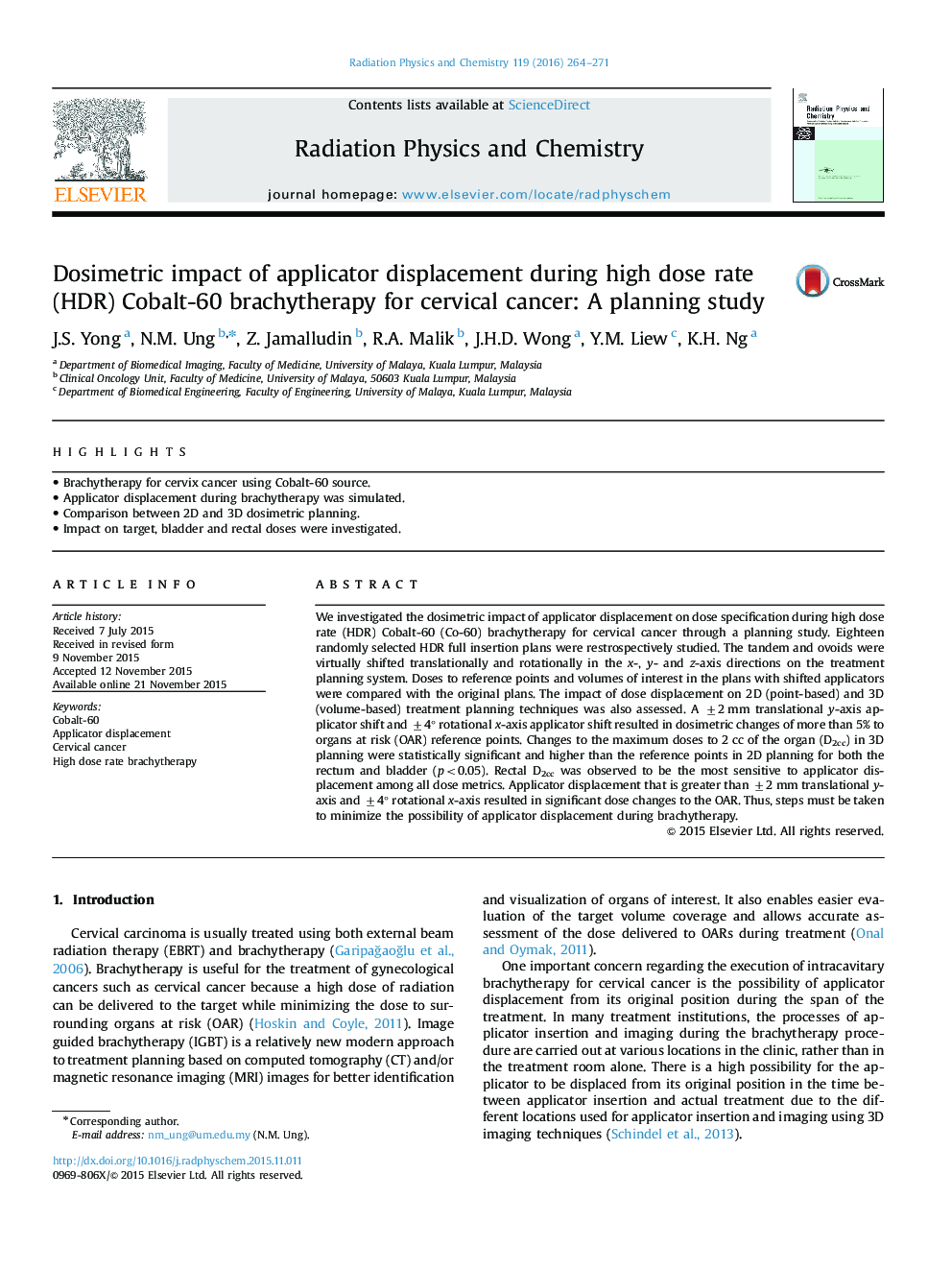| Article ID | Journal | Published Year | Pages | File Type |
|---|---|---|---|---|
| 1885767 | Radiation Physics and Chemistry | 2016 | 8 Pages |
•Brachytherapy for cervix cancer using Cobalt-60 source.•Applicator displacement during brachytherapy was simulated.•Comparison between 2D and 3D dosimetric planning.•Impact on target, bladder and rectal doses were investigated.
We investigated the dosimetric impact of applicator displacement on dose specification during high dose rate (HDR) Cobalt-60 (Co-60) brachytherapy for cervical cancer through a planning study. Eighteen randomly selected HDR full insertion plans were restrospectively studied. The tandem and ovoids were virtually shifted translationally and rotationally in the x-, y- and z-axis directions on the treatment planning system. Doses to reference points and volumes of interest in the plans with shifted applicators were compared with the original plans. The impact of dose displacement on 2D (point-based) and 3D (volume-based) treatment planning techniques was also assessed. A ±2 mm translational y-axis applicator shift and ±4° rotational x-axis applicator shift resulted in dosimetric changes of more than 5% to organs at risk (OAR) reference points. Changes to the maximum doses to 2 cc of the organ (D2cc) in 3D planning were statistically significant and higher than the reference points in 2D planning for both the rectum and bladder (p<0.05). Rectal D2cc was observed to be the most sensitive to applicator displacement among all dose metrics. Applicator displacement that is greater than ±2 mm translational y-axis and ±4° rotational x-axis resulted in significant dose changes to the OAR. Thus, steps must be taken to minimize the possibility of applicator displacement during brachytherapy.
